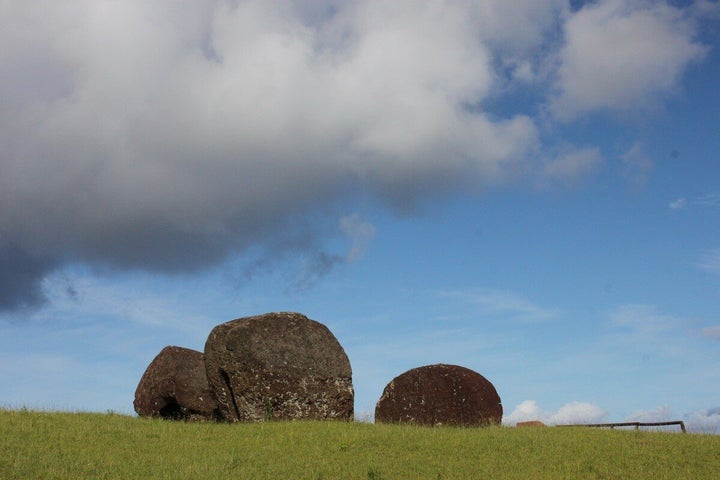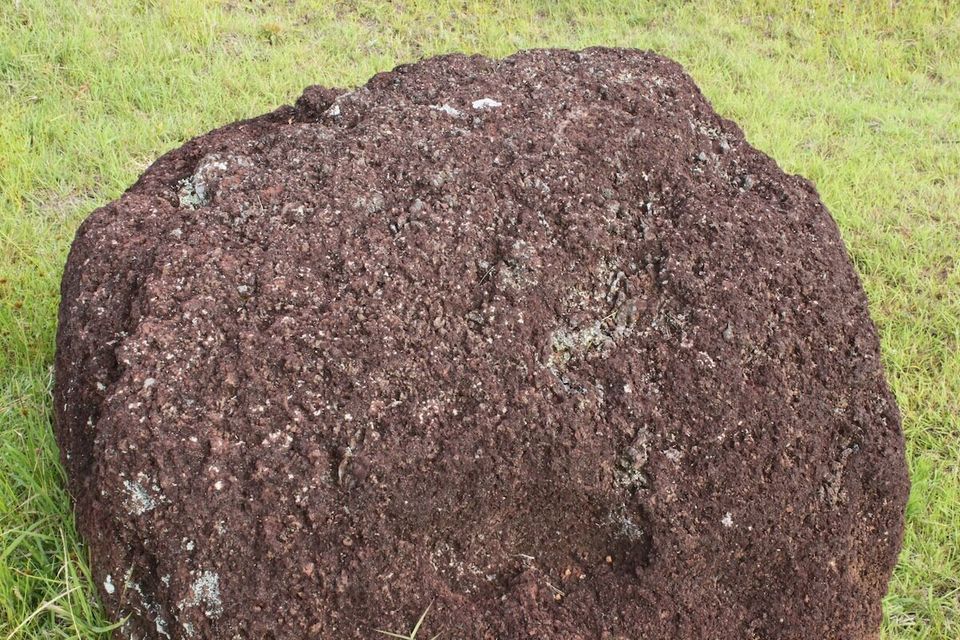
Every destination has its blockbuster attractions, whether it's the Eiffel Tower in Paris, the Empire State Building in New York or the Sydney Opera House. Easter Island, with its mysterious stone moai statues is no exception, and the quarry from which they were carved is rightly at the top of most visitors' to-do lists when they finally make it to the remote island. But there's another fascinating quarry on the island that proves the point that the best travel experiences are a bit further beneath the gloss of a travel brochure.
The volcanic crater known as Puna Pau, near the only town on the island, was a pre-industrial factory for objects known as pukao, relatively smaller sculptures that would sit on the heads of the grand moai across the island. Popular lore explains that they represent the topknots, or up-turned hair, of local notables who were memorialized in the moai statues. A minority of archeologists suggest they were hats, inspired by European visitors who called on the island in recent centuries. (There are far fewer pukao on the island than moai, suggesting the former were a relatively recent invention compared to the latter.)
Whatever their purpose or form, everyone agrees that the fashioning of these round, multi-ton sculptures was a triumph of engineering that would be remarkable if it weren't for the already unbelievable feats being accomplished on the other side of the island at the quarry of Rano Raraku, where moai of extraordinary size were being chipped out of the volcanic crater with little more than stone hammers.
So it is that Puna Pau, with its 21 pukao scattered across verdant rolling hills perched above the sea goes somewhat unnoticed by visitors on five-cent tour of the island.
Which is not to say that it's exactly undiscovered. A team of British archeologists was just here, one local guide said, digging for information as archeologists do. No less an explorer than Captain Cook also took note of the site in 1774 after some of his surveying party explored the crater, explain researchers Terry Hunt and Carl Lipo in their recent book The Statues That Walked, quoting Cook:
In a small hollow, on the highest part of the island, they met with several such cylinders as are placed on the heads of the statues. Some of these appeared larger than any they had seen before … It would have been no difficult matter to roll them down the hill after they were formed.
Many of the weathered pukao still lie abandoned on the hills here and might be easily mistaken for boulders strewn about by an eruption, if it weren't for the historical record. If the moai are mind-bogglingly huge, the more human scale of the pukao makes the craftsmanship that went into them all the more appreciable. At this size, a visitor can appreciate the work of the artisans who carved this stone rather than simply marvel, mouth agape, at the sheer will it would take to create such monoliths.
